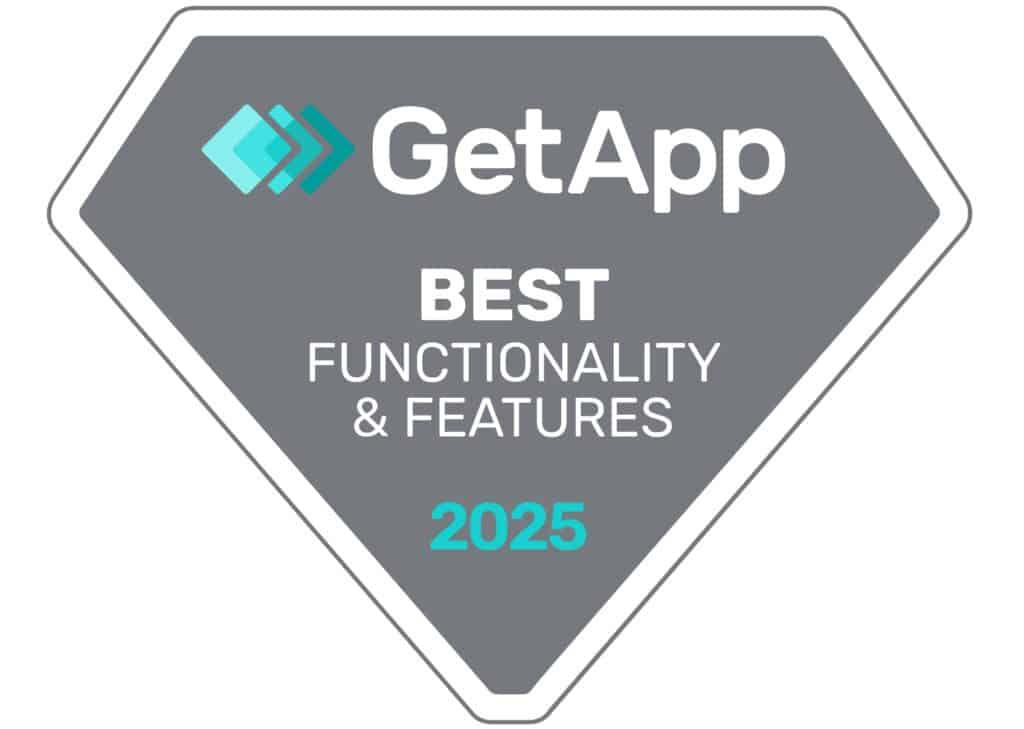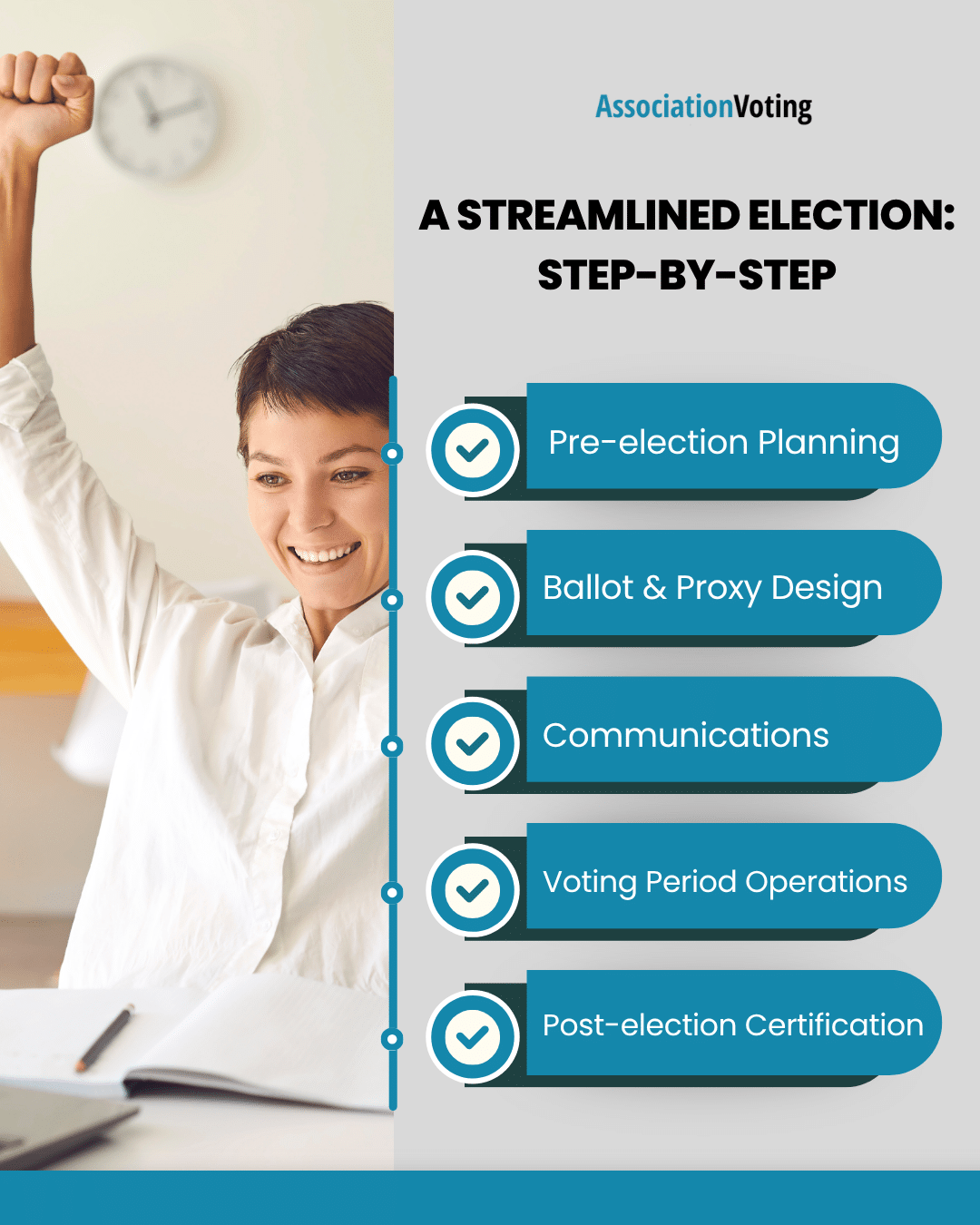Now that you’ve read part 1 of the guide, “How to Streamline Board Elections and Proxy Voting for Associations (Part 1): The ‘WHY’”, are you ready to move from principles to practice?
Part two of this guide lays out the steps, from pre‑election planning and ballot/proxy design to turnout communications, operations, and certification—plus a quick checklist and sample FAQs.
A Streamlined Election (Step-by-Step)
1.) Pre‑election Planning
- Confirm governing rules: who’s eligible, proxy requirements, nomination windows, and quorum thresholds.
- Lock your calendar: share firm open and close times for nominations, proxy submissions, voting, and results certification.
- Centralize communications: publish one election landing page with plain‑language FAQs and all key dates.
- Prepare your list: verify member eligibility, preferred contact channels, and accessibility needs.
- Decide channels: online only, paper + online (hybrid), or meeting‑based with remote participation and proxies.
2.) Ballot & Proxy Design
- Keep it clear and consistent: candidate bios/photos in the same format; motions written in one clear language, including summary and full text.
- Structure choices: single‑choice, multi‑select, weighted score, or yes/no; match your bylaws and state/local rules.
- Avoid duplicates: one eligible member = one counted ballot; reconcile proxy assignments before voting begins.
- Accessibility: focus on mobile‑first layouts and clear, readable fonts; offer printable materials upon request.
Common Proxy Types
- Proxy assigned by voter (member designates a proxy holder)
- Proxy assigned by admin (voting manager assigns under permitted rules)
- Voter abstains, no proxy assignment (used for quorum purposes where allowed; voter does not see the ballot; no proxy assigned)
- Voter casts own ballot (no proxy; member votes directly)
For assigned proxies, you may allow:
- Limited proxy (principal can see ballot and direct choices)
- General proxy (principal may not see ballot; proxy holder selects choices within rules)
3.) Communications that Help Drive Turnout
Three‑touch pulse:
- Announcement (what’s at stake, who can vote, how to assign a proxy, etc.)
- Opening day (ensure personalized voting links, proxy instructions, etc.)
- Deadline reminder (short and urgent with an estimated completion time: “2–3 minutes”)
- Personalize: include the member’s name, eligibility, and a direct link to their ballot or proxy form.
- Explain proxies in a plain language: who can hold them, how to submit, and how to revoke/replace before the deadline.
4.) Voting Period Operations
- Identity & eligibility checks: require unique credentials or personalized links; flag ineligible or duplicate attempts.
- Proxy validation: configure signature capture and member‑only proxy validation if required; allow revocation before the deadline if permitted.
- Hybrid harmony: if you accept paper ballots, log them in the same system you use for online votes so totals, rejections, and audit trails stay unified.
- Real‑time monitoring: track participation rates, proxy uptake, and progress toward quorum to guide reminders.
5.) Post‑election Certification
- Audit trail review: confirm counts by channel, invalid/rejected ballots (and reasons), and time‑stamped events.
- Report transparently: publish tallies, turnout, quorum achievement, and high‑level methodology.
- Capture lessons learned: note common member questions, friction points, and any bylaw clarifications needed.
Quick Checklist for Stress‑free Elections
- Bylaws and legal requirements reviewed
- Eligibility list verified and cleaned
- Ballot and proxy types selected and tested
- Central election page published (dates, FAQs, contact)
- Three‑touch comms scheduled (announce, open, reminder)
- Hybrid process documented (paper + online)
- Proxy validation rules configured
- Real‑time participation monitoring enabled
- Audit and results report templates ready
Sample FAQs
Do proxies count toward quorum?
Often yes, but it depends on your bylaws and governing law. Configure your election accordingly and state this clearly in your FAQs.
Can we mix paper and online ballots?
Yes. If you run a hybrid process, ensure paper ballots are logged alongside online votes and that rejected ballots are acknowledged for transparency.
How do we prevent double‑voting?
Use personalized links/credentials, validate proxies before voting, and enforce “one eligible member = one counted ballot” with a unified system of record.
You now have a blueprint you can run as‑is or adapt to your bylaws. In Part 3, see how AssociationVoting implements these steps out of the box and how to get started fast!






